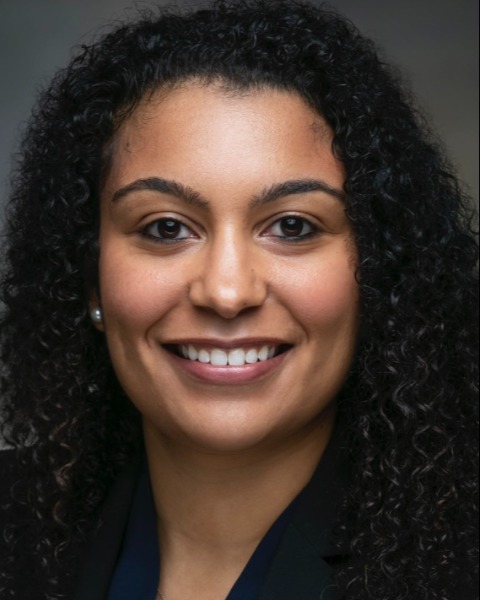Breast
non-CME
P5: Allostatic Load as a New Predictor of Postoperative Complications in Oncology Patients

JC Chen, MD (they/them/theirs)
General Surgery Resident
The Ohio State University
Columbus, Ohio, United StatesDisclosure information not submitted.

JC Chen, MD (they/them/theirs)
General Surgery Resident
The Ohio State University
Columbus, Ohio, United StatesDisclosure information not submitted.
- ME
Mohamed Elsaid, MPH, PhD
Assistant Clinical Professor
The Ohio State University Department of Biomedical Informatics, United StatesDisclosure information not submitted.
- YL
Yurong Lu, MS
Biostatistician
The Ohio State University Center for Biostatistics, United StatesDisclosure information not submitted.
- BA
Barbara Andersen, MA, PhD
Clinical Professor
The Ohio State University Department of Psychology, United StatesDisclosure information not submitted.

Timothy M. Pawlik, MD, PhD
Chair of Surgery
The Ohio State University Wexner Medical Center
Columbus, Ohio, United StatesDisclosure(s): No financial relationships to disclose
- WC
William Carson, III, MD
Professor, Division of Surgical Oncology
Ohio State University James Cancer Hospital, Columbus, OH, USA, United StatesDisclosure information not submitted.

Nicci Owusu-Brackett, MD
Complex General Surgical Oncology Fellow
The Ohio State University, Ohio, United StatesDisclosure information not submitted.

Samilia Obeng-Gyasi, MD, MPH (she/her/hers)
Associate Professor of Surgery
The Ohio State UniversityDisclosure(s): No financial relationships to disclose
Poster Presenter(s)
Author(s)
First Author(s)
Allostatic load (AL) is a composite measure of physiologic dysregulation secondary to exposure to adverse socioenvironmental stressors, i.e., poverty and discrimination. In patients with cancer, elevated AL has been associated with aggressive pathology (e.g., estrogen receptor negative breast cancer) and worse mortality. Currently, no studies have explored the relationship between AL and surgical complications. This study aims to examine the association between AL and postoperative complications (POC) in patients with breast cancer.
Methods:
The Ohio State University cancer registry was retrospectively reviewed for women, ages 18+, diagnosed with stage I-III breast cancer between 1/1/12-12/31/20. AL biomarkers included alkaline phosphatase, albumin, creatinine, heart rate, white blood cell count, body mass index, blood urea nitrogen, blood glucose, and blood pressure. Each biomarker was divided into quartiles, and one point was assigned for values in the worst quartile of the sample. Points for each biomarker were added into a single score with increasing AL indicative of worse physiologic dysregulation. High AL was defined as a total AL score greater than the median. P<span style="color: black; mso-color-alt: windowtext; background: white;">OC (e.g., hematoma, renal failure, etc.) within 30 days of surgery were examined. Univariable and multivariable logistic regression analysis evaluated the relationship between AL and POC.
Results:
Of the 4492 patients in the study cohort, 3913 (87.1%) identified as White, 386 (8.6%) Black, and 193 (4.3%) other. The median age was 59 years (IQR 49.0, 67.0), and the median AL was 2.0 (IQR 1.0, 4.0). The mean AL score was 15% higher in the POC vs. no POC group (3.0 vs. 2.6, P< 0.001). The overall prevalence of POC was 8.2%, with higher rates in the high AL group (9.7% vs. 6.7%, P< 0.001). On adjusted analysis, high AL was associated with 32% higher odds of developing a POC OR 1.32 (95% CI 1.03-1.67). Further, a one-quartile increase in AL was associated with a 14% increased odds of POC OR 1.14 (95% CI 1.02-1.28). High AL remained a significant predictor of higher odds of POC in a univariable model with the Charlson Comorbidity Index (CCI) OR 1.35 (95% CI: 1.07, 1.70). Although not statistically significant, high AL was associated with POC OR 1.24 (95% CI 0.97, 1.57) in the fully adjusted model which included CCI.
Conclusions:
Biological correlates of exposure to adverse socioenvironmental stressors, operationalized as AL, are associated with an increased risk of postoperative complications in patients with breast cancer. Future studies should compare and incorporate AL within established surgical risk indicators.
Learning Objectives:
- Define allostatic load
- Describe the association between allostatic load and cancer
- Understand the relationship between allostatic load and postoperative complications in breast cancer patients
